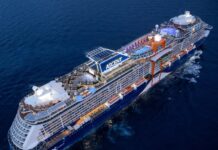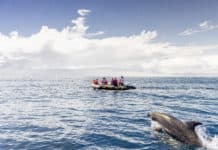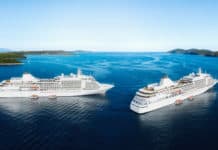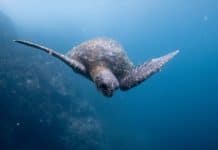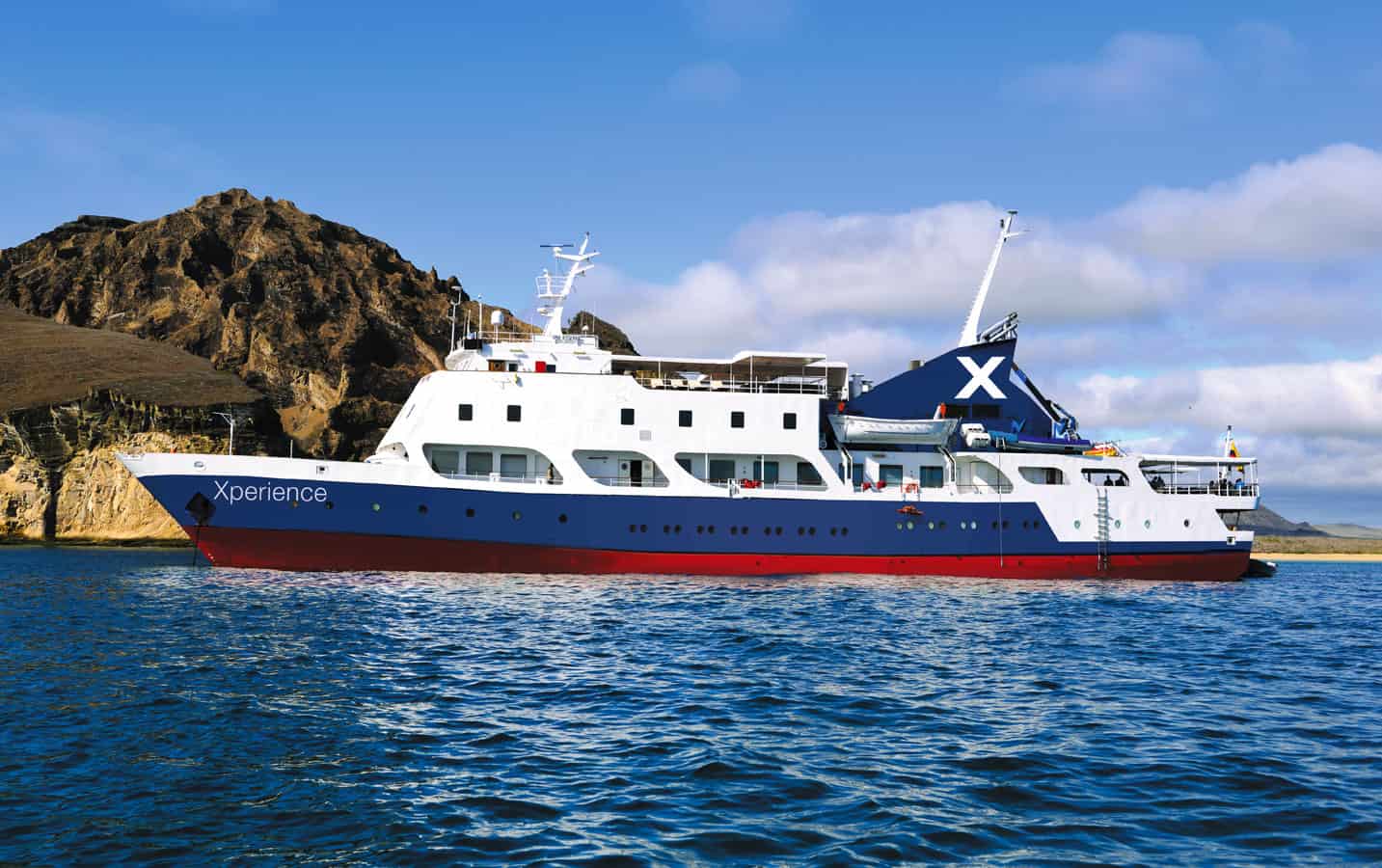 Like virtually all species before us, we are carried to the Galapagos Islands by the wind and the sea.
Like virtually all species before us, we are carried to the Galapagos Islands by the wind and the sea.
Six-hundred miles off the western coast of Ecuador, the isolated archipelago, one of the first UNESCO World Heritage sites, marks the spot where animals have been redefining Mother Nature’s laws for millions of years. Iguanas forage in the sea alongside penguins, colossal boulders crumble to the touch, and ambling giant tortoises bring traffic to a halt. It’s all very topsy-turvy, which is precisely the experience that Celebrity Cruises aims to deliver to our group: encounters with nature that cannot be found anywhere else on earth.
A Place to Grow
Aside from being the living museum that inspired naturalist Charles Darwin’s theory of evolution, the Galapagos is an enchanting destination for incentive groups that need to break down barriers and evolve as a team. The bonding happens shortly after landing on Baltra Island from Quito, Ecuador: we don lifejackets, batten down our carry-ons and climb onto gently rocking Zodiacs to scale the top of the sea.
“Ninety-seven percent of the islands are Galapagos National Park,” explains naturalist Javier Candos. Our every move, and the movements of other ships in the area, would be carefully choreographed to reduce environmental impact. Excitement builds as we inch closer to the Celebrity Xperience, and we set sail for North Seymour Island almost immediately (give or take a couple of welcome cocktails) after boarding—the largest colony of frigatebirds, and their impressively puffed red, balloon-like pouches, will not wait for us. In fact, we’re about to have Christmas in July (red and green Christmas iguanas included) as “the Humboldt Current brings cold water and with it even more biodiversity to the area,” Candos says. “It’s perfect for diving and snorkeling.”
The Experience
The first in a seven-day whirlwind of excursions, our Zodiac pulls up slowly to North Seymour Island’s flat, nature-made lava rocks and we are immediately met by ornate sally lightfoot crabs, swallow-tailed gulls and snoozing sea lions. Candos guides us along a path edged by bushy vegetation that camouflages the fuzzy white heads of young frigatebirds, while the distinct drumming sounds emanating from the pouches of adult males play like an Etta James song. Indeed, love is in the air…at last. It’s here that we meet our first land iguanas as well; some munching on juicy cacti, some stretched out lazily in the sun. But it’s the frigatebirds that steal the show as bursts of red pop against the light brown brush and vibrant blue sky. “When it comes to choosing a mate, size matters,” Cando says to chuckles. “Females look for the biggest and brightest pouch.”
Hopping off the side of the Zodiac along Santa Fe Island, we drifted through a spellbinding world of curious sea lions and colorful fish parades.
Jaunts around the islands of South Plaza, Santa Fe, San Cristobal and Floreana reveal different variations of a dream. On South Plaza, dainty yellow warblers and Darwin finches flitter among whimsical tall prickly pear cactus trees that either bush out or tower over miles of red carpet plant. A feeding frenzy of blue-footed boobies, frigatebirds, brown noddy birds and nesting red-billed tropicbirds adds chaos and clatter to the waking morn, but land and marine iguanas (the only seagoing iguanas in the world), brown pelicans and a harem of snoozing sea lions are too preoccupied with the important business of basking under the ascending Galapagos sun to care. The big news here is a cacti conservation project that will help create stability for land iguana populations. Like the iguanas themselves, cacti have adapted island to island. On South Plaza, they sprouted up like fireworks high above the iguanas that feed on them.
Celebrity is also no stranger to sustainability in the area. From the eco-friendly chocolates on guest room pillows to locally sourced menus, “paying it forward” is an underlying theme. “Celebrity and the Galapagos Conservancy have also built greenhouses, developed organic agricultural initiatives and allowed groups to participate in reforestation efforts,” Candos explains. More than 16,000 scalesia trees have been planted so far, and really, how does it get any better than responsibly homegrown chocolates on your pillow every night?
Meanwhile, on Santa Fe Island, we encounter the lovely Galapagos dove and bashful mockingbird here for the first time, but the big adventure comes later. Hopping off the side of the Zodiac along Santa Fe Island, fully festooned by our naturalists with snorkeling gear, we drifted through a spellbinding world of curious sea lions and colorful ray and fish parades. A rugged and steep path on San Cristobal winds its way up to the nesting grounds of the blue-footed boobies. Like the frigatebirds, female blue-footed boobies look for the biggest and most luminous blue feet, and males proudly show them off—lift and lower, lift and lower—during courting rituals. It’s almost blush-worthy to be a part of this. The cliffs are also haven to the ever elusive red-footed boobies, which number around 300,000 across the islands, but which are rarely seen, and between the two species and striking unsullied landscapes, the challenging death climb hike has suddenly been worthwhile.
We then head to El Manzanillo Ranch in the highlands to walk in the footsteps of giants as these beauties slowly roam, but never dawdle, along migrating paths—sometimes up to 1,000 feet a day— with stoic determination.
A playful pod of bottle-nosed dolphins give us a guided tour of the Pacific as we skirt by Floreana’s eggnog-hued beaches, made of pulverized coral, and prismatic turquoise fringe. After our first wet landing, we are given the option to hand-deliver mail for some of the island’s 140 residents via a “post office,” or wooden barrel and hand-tossed “debris” established on the beach by 18th-century whalers. Giant tortoises, flamingos and the only penguin species north of the equator are the not to be missed animals here, but the scruffy Floreana mockingbird is sure to tug at attendees’ hearts.
Sea lions toy with our Zodiac on Isabela Island, where groups can also hike across a 1,000-year-old lava field, as golden rays, giant sea turtles, penguins and marine iguanas get on with their own business. The real treat here is the chance to observe a courting ritual of the flightless cormorant bird: a hopeful male dives up to 40 ft to retrieve gifts that the female uses as decoration. If she likes her present all is well in the flightless cormorant’s household; if not, take a flight Jack and don’t come back without something stylish and bedazzling.
In the Footsteps of Giants
A Zodiac ride to Puerto Ayora on Santa Cruz Island takes us back to civilization where we get a glimpse of local life and the giant tortoise conservation efforts underway at the Charles Darwin Research Station. Naturalist Karina Lopez shares with us the history of center, including a tour of some of the breeding areas and the gist of local conservation challenges, as well as a behind the scenes look at the preserved remains of Lonesome George, the last of the saddleback giant tortoises before the species went extinct a few years back. “It’s sad, but a reminder that conservation must happen today, not tomorrow,” Lopez says. We then head to El Manzanillo Ranch in the highlands to walk in the footsteps of giants as these beauties slowly roam, but never dawdle, along migrating paths—sometimes up to 1,000 feet a day—with stoic determination. The ranch provides rain boots for exploring the grounds where hundreds of tortoises are mating and meandering through. Like Longfellow’s ships which “speak” only in passing, females head back to the lowlands after “the deed” and males further into the highlands. Truly extraordinary.
A Hierarchy of Islands
The island of Espanola will eventually sink back into the sea from which it came. During a geological lecture, we learn that the Galapagos Islands rest along one of 40 volcanic hot spots in the world. This, along with its unusual positioning on the Nazca plates creates a continuous volcanic cycle, or hierarchy of islands of sorts: abnormally hot mantle plumes funnel magma up to create an island and the tectonic plates move the island away from the heat source over time. Like monarchies of the past, a new island is born over the plume as the old island cools and gradually sinks back into the sea, and the cycle continues.
As the oldest island above the sea at 4 million years, it’s only fitting that Espanola would be the last island on our journey. A long rocky walk introduces us to the red and green Christmas iguana, nursing sea lions, watchful Galapagos hawks, and a true marvel, the waved albatross, which can remarkably stay years at a time in the air. Birds swooping through the air, sea lions snoozing in carved out platforms in the rocks and the slapping of whale fins on water in the distance all seemed to channel Cat Stevens’ “The Wild,” connecting everyone in a moment of wonder. We sat upon the setting sun and never wanted water once.
The Ship
The intimacy and relaxed atmosphere of the 48-passenger Celebrity Xperience, combined with an all-inclusive experience start to finish, allows groups to focus on building relationships. Immersive itineraries are built on shared experiences—whether gourmet meals that are cooked under the stars via open-air grilling, luxury staterooms that lock only from the inside or rare encounters with nature. The crew is quick to customize the F&B experience as well to fit specific dietary needs.
This is essentially a ship for disconnecting and reconnecting, and such, is available for buyout. Groups will undoubtedly climb to the sundeck for relaxation, a dip in the hot tub, sweeping views of the islands and a decent WiFi signal, and stay long into the evening chatting with colleagues or new friends about the day’s experiences and what tomorrow will bring. First and foremost, Candos says, “this is an expedition ship where you will become explorers.” And do they ever keep you on your toes. In addition to excursions into the wild blue yonder, movie nights, frequent lectures and trivia ensures momentum for the moment. In such an immediately immersive environment teeming with life, groups will surely find that the urge for creature comforts is quickly redefined.



